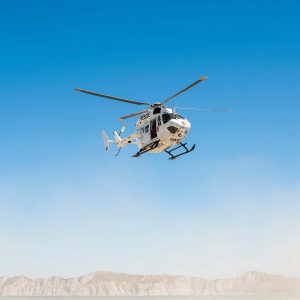New figures show the number of missions flown out of the Eastland Helicopter Rescue Trust Hanger increased more than seven-fold in the days after Cyclone Gabrielle and the local crew says it was a massive team effort.
But even that increase in numbers doesn’t tell the whole story: three of the helicopters involved were in Gisborne for just four days of that week, and for all four only trauma or medical missions were formally recorded.
“The reality is that, on just one day in Gisborne, one of our helicopters did 10 taskings around the East Coast (mostly search, rescue and recon operations to identify isolated communities) while the other grid-searched around the East Cape with multiple stops, but only three ‘missions’ were recorded,” says HeliOtago chief executive/lead pilot Graeme Gale, who operates the Otago Southland Rescue Helicopter service.
“That was the nature of the work required in an emergency situation, it’s just not borne out in the official numbers.”
The cyclone struck on the night of Monday, February 13 and despite there being no comms, limited water and for periods of time no power, Gisborne’s Trust Tairāwhiti Eastland Rescue Helicopter was in the air by the following morning.
Help was on its way after the Lower Hutt-based Rescue Co-Ordination Centre (RCC) called on Search and Rescue Services Ltd (SRSL, which manages operations at eight North Island bases) and HeliOtago, providers of the Otago Southland service.
Though both the helicopter SRSL brought from Taupo and the two flying from Otago had paused in Hastings to conduct rescue missions, by Wednesday they had landed in Gisborne.
And within an hour the Otago crews were flying missions around Tairāwhiti, the Taupo team joining them the next morning after a mandatory rest period.
With Gisborne’s then-team of nine bolstered by two extra North Island crew and seven from the South Island, the Eastland Helicopter Rescue Trust (EHRT) took care of practical needs like meals and showers.
Meanwhile, SRSL clinical operations manager Graeme Harvey – who arrived on the Taupo helicopter – worked with the Gisborne base manager to ensure mission demands were met without risking pilot, paramedic and crew fatigue.
Together, the crews flew a total of 37 trauma and medical response missions that week. Of those, 26 were flown by the Trust Tairāwhiti Eastland Rescue Helicopter; six by Taupo’s Greenlea Rescue Helicopter (from the Philips Search and Rescue Trust); and five by HeliOtago’s two helicopters.
“The tally of 37 trauma and medical flights compares to our team’s weekly average of around five missions a week, which just goes to show how busy it was at the hangar,” says EHRT chair Patrick Willock.
“That’s not even counting the support and reconnaissance taskings, which saw all four helicopters in the air as often and for as long as could be safely managed.”
SRSL was formed by five North Island rescue helicopter trusts – including Gisborne’s – to professionally manage operations and Mr Willock says the response post-Gabrielle shows how powerful it is.
“The relationships formed and maintained really showed their worth. And we also have strong links with the Otago Southland Rescue Helicopter service, which arrived in Gisborne and hit the ground running.”
For his part, Graeme Gale says that, as a commercial operator, he had the resources to respond to the call north without affecting the service available to Southerners.
HeliOtago’s pilots, paramedics and crew left the EHRT hangar just after midday on Saturday to head home.
“Though tasked by the RCC, we were actually working with the Gisborne, Taupo and Hawke’s Bay services . . . we just send the resources where and when they are needed,” Mr Gale says.
“The reason it came together so well is because we’re all a big family working towards achieving the same goal.”
